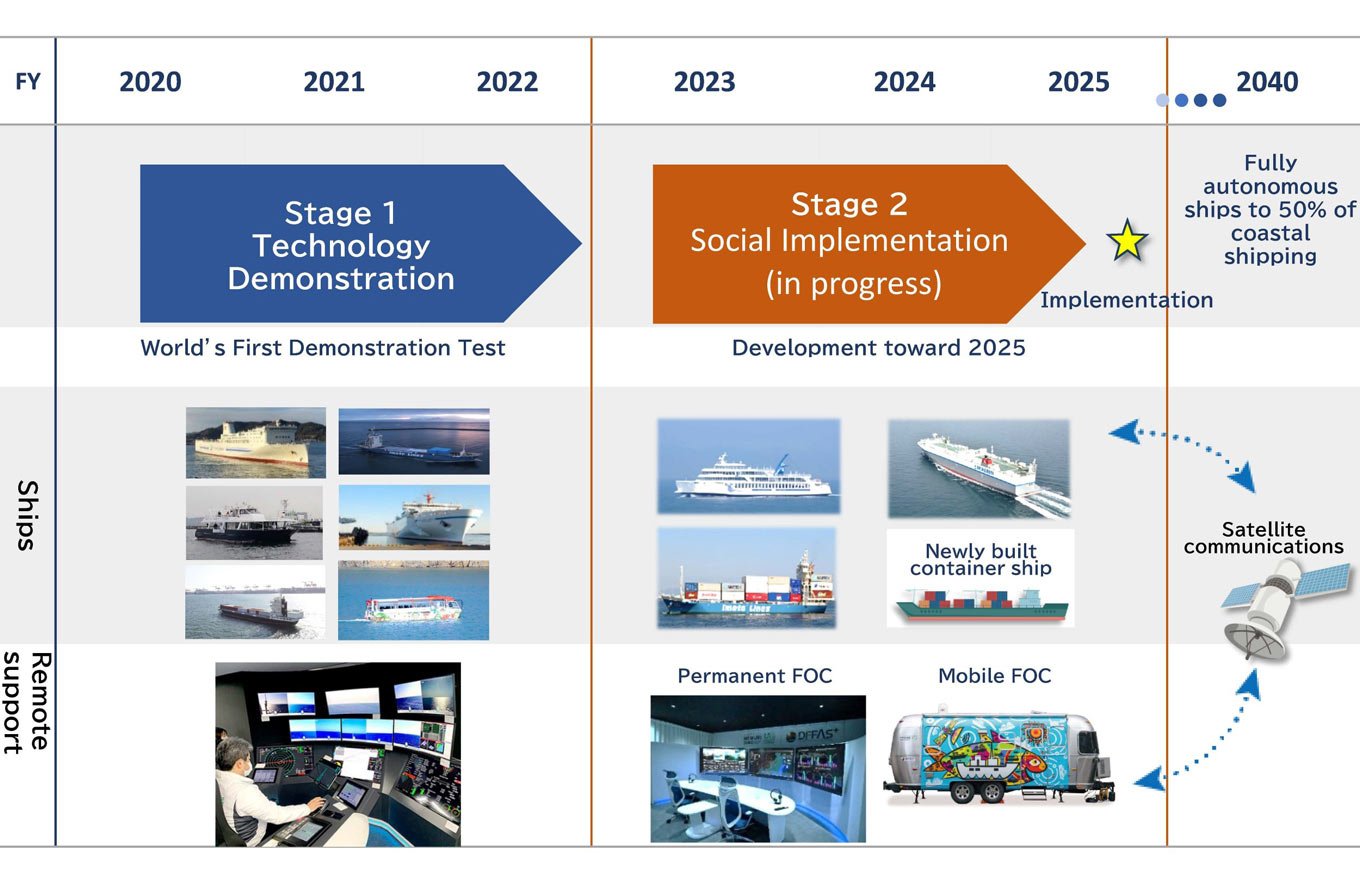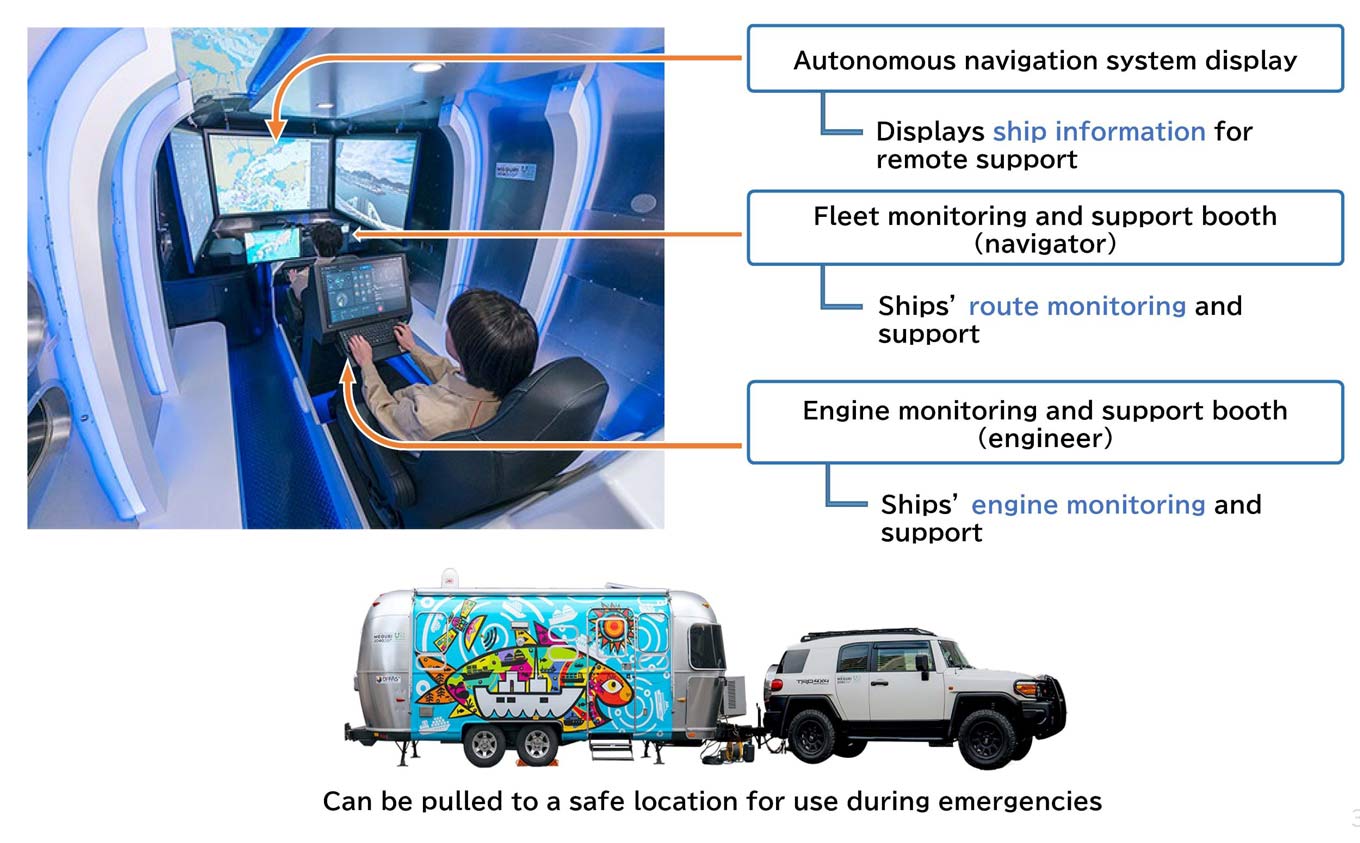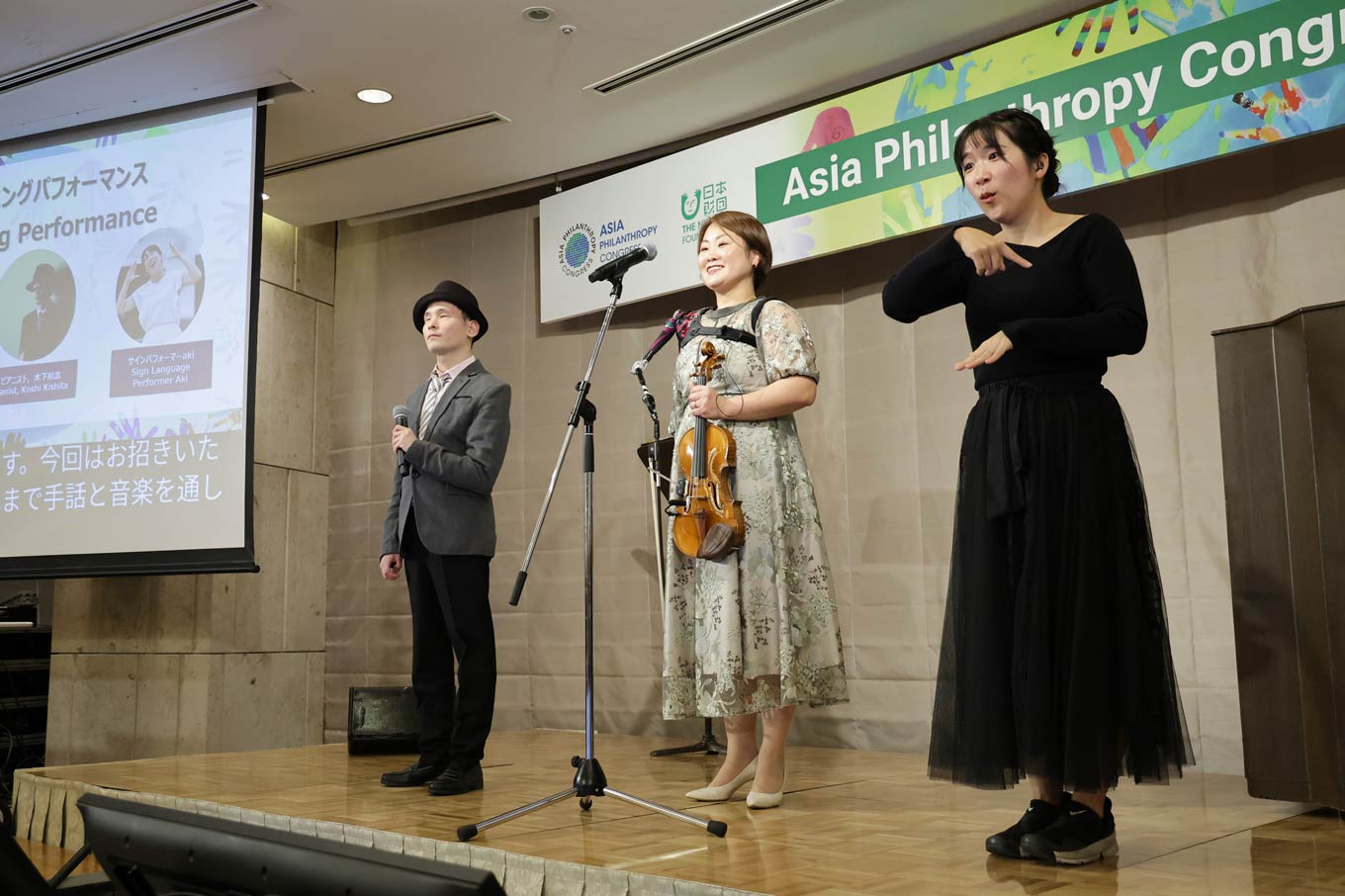World’s First1 ‘Mobile’ Fleet Operation Center CompletedMEGURI2040 Fully Autonomous Ship Program completes compact center that can support ships remotely during disasters
The Nippon Foundation launched the MEGURI2040 Fully Autonomous Ship Program in February 2020. On February 5, 2025, the project completed a “mobile” Fleet Operation Center that has been under development for remote navigational support from land for multiple ships.
This Fleet Operation Center is housed in a cargo trailer that can be pulled and moved anywhere, meaning that in the event of a disaster or other emergency, it can be moved to a safe location and continue to provide remote navigational support to multiple ships. With a view toward more widespread use in the future, the necessary systems for remote navigational support are compacted to fit within a space seven meters in length.
The mobile Fleet Operation Center will be used to provide remote navigational support to multiple ships in demonstration testing, scheduled to commence from the summer of 2025, toward social implementation. The Nippon Foundation aims to incorporate the knowledge of the 53 companies participating in MEGURI2040 into the Fleet Operation Center as a way of accelerating the project toward the achievement of its goal of fully autonomous navigation accounting for 50% of domestic shipping by 2040.

Fully autonomous navigation is expected to lead to the resolution of a variety of social issues by reducing accidents with ships and addressing crew shortages. Research and development is proceeding as a “future industry” that can take advantage of Japan’s advanced technologies, including information and communications technology (ICT), artificial intelligence (AI), and image analysis on a global scale. In particular, with the use of marine transport expected to increase in response to the so-called “2024 issue” in logistics (labor shortages resulting from caps on overtime by truck drivers that took effect in 2024), this technology is gaining attention as a way of contributing to the alleviation of ship crew shortages.
Going forward, The Nippon Foundation will continue to work toward the development and implementation of autonomous navigation in Japan and to cultivate greater understanding among the public, as a way of maintaining stable logistics by addressing the issues of aging ship crews and crew shortages and accidents involving ships in Japan’s coastal shipping industry, which accounts for 40% of Japan’s domestic logistics.2
- Note 1: According to The Nippon Foundation’s research, this development of a “mobile” Fleet Operation Center is the world’s first.
- Note 2: According to Ministry of Land, Infrastructure, Transport and Tourism statistics (2023)
Current status of MEGURI2040 Fully Autonomous Ship Program
During Stage 1 of MEGURI2040, demonstration testing was successfully carried out for autonomous navigation of six vessels during January – March 2022. This included demonstrations of autonomous navigation in the congested waterways of Tokyo Bay, as well as on long-distance routes of more than 12 hours.
The knowledge gained from Stage 1 is currently being used with the aim of practical implementation for commercial transport by a Ro-Ro vessel transporting milk and agricultural products along coastal shipping routes that connect remote islands in the Seto Inland Sea. Demonstration testing of four vessels using two Fleet Operation Centers is scheduled to commence from fiscal 2025 (beginning April 2025), with the aim of having autonomous navigation account for 50% of domestic shipping by 2040 and thereby alleviating crew shortages and increasing navigational safety.
As of February 2025, with four demonstration testing vessels and two Fleet Operation Centers, final preparations are being made for demonstration testing and steady progress is being made for the social implementation of autonomous navigation.

Role of land-based support centers in autonomous navigation systems
Autonomous navigation systems consist of: (1) “Vessels” that carry out the autonomous navigation function; (2) “Onshore support” that supports vessels from land; and (3) “Telecommunications (satellite communications)” that manages and controls telecommunication lines and information. In MEGURI2040 Stage 2, remote navigational support will be provided from two locations, the permanent Fleet Operation Center completed in July 2024 in Nishinomiya City, Hyogo Prefecture, and the recently completed mobile Fleet Operation Center.

Functions and development highlights of the mobile Fleet Operation Center
In Stage 1, usage rates for the autonomous navigation system on a 790-kilometer roundtrip voyage were 97.4% on the outbound leg and 99.7% on the inbound leg, but despite these high rates several issues emerged. They included the need for remote support for multiple ships as opposed to just one, efficient operations for remote support of voyages that can last several months, and countermeasures in the event the permanent Fleet Operation Center is damaged in a disaster. In addition, from the perspective of widespread adoption of autonomous navigation, in addition to a fully equipped permanent Fleet Operation Center, a more compact version of remote support was needed.
Based on these findings, the mobile Fleet Operation Center was made in a cargo trailer that can be pulled, so that in the event of a disaster or other emergency, it can be moved to a safe location and provide continuous support. The fact that the design uses a compact layout that fits all of the functions needed for remote support into a space seven meters in length is expected to give a boost to more widespread adoption in the future. In the social implementation demonstration testing that is scheduled to commence from around the summer of 2025, plans are for the center to support remote navigation for four vessels.

Related Link
Contact
Ocean Affairs Team
The Nippon Foundation
- E-mail: MEGURI2040@ps.nippon-foundation.or.jp



